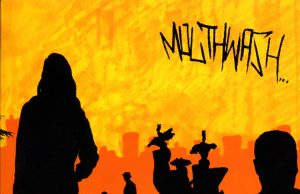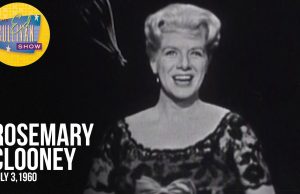 From Grade 7 through to high school graduation, I was a French-immersion kid. That means more than half my day was in French. I learned grammar and vocabulary, of course, but I also took claviographie instead of typing, as well as social studies, geography, history, gym, art, science and law in French. We had a TA in the classroom to teach us about Francophone culture, which included music like Gilles Vigneault, Beau Dommage and Robert Charlebois.
From Grade 7 through to high school graduation, I was a French-immersion kid. That means more than half my day was in French. I learned grammar and vocabulary, of course, but I also took claviographie instead of typing, as well as social studies, geography, history, gym, art, science and law in French. We had a TA in the classroom to teach us about Francophone culture, which included music like Gilles Vigneault, Beau Dommage and Robert Charlebois.
It gave me a very solid understanding of “the two solitudes” and I became, and remain, very supportive of the “distinct society.” But before I even started in immersion, I learned the key to being bilingual — stop translating. Speak English or speak French, but don’t translate. When your brain is constantly running ahead of your words, swapping English into their French equivalent, it’s awkward, laboured and usually hilariously incorrect.
It was around this time, maybe in Grade 5 or 6, that I learned O Canada‘s English and French lyrics were entirely different. I had just assumed the French ones were a direct translation of the English one. But the French ones came first by 28 years, and they’re two entirely different lyrics with different symbolism, emphasis and meaning. Incidentally, when I used to watch Montreal Canadiens or Quebec Nordiques games as a kid — and the anthem was sung before the game in French — I thought the third line referred to Guy Lafleur. Sounded to me like they were singing “Lafleur est glorieux” (Lafleur is glorious) rather than “les fleurons glorieux” (glorious deeds). Made sense to me. He was glorious.
In fact, if we were to sing a translated version of the French O Canada, it would go like this:
“O Canada!
Land of our ancestors
Glorious deeds circle your brow
For your arm knows how to wield the sword
Your arm knows how to carry the cross
Your history is an epic
Of brilliant deeds.”
Then you’ve got the “God keep our land…” bit, but when I first learned the anthem, this part didn’t exist. Instead, the line that followed was:
“Et ta valeur, de foi trempée,
Protégera nos foyers et nos droits.”
This translates to:
“And your valour, steeped in faith
Will protect our homes and our rights.”
So, when I recently went down a swinging ’60s French pop rabbit hole, I was fascinated and enthralled by all the French covers of famous English-language pop songs. There’s a name for it — Yéyé, and it became a wave of music in the mid-’60s. Some Yéyé songs are direct, or reasonably direct translations of their English originals, but many more are entirely new lyrics and concepts. Sometimes, the songs have entirely different titles as well. Seems to be a murky-as-hell area when it comes to royalties and copyright. I’ve fashioned a playlist of the original songs, and the French covers — but first, let’s go through them:
Le Spectre | Pourquoi (Talk Talk by The Music Machine)
Montreal garage-rock band The Haunted more famously covered Jimi Hendrix’s Purple Haze as Vapeur Mauve — a direct translation, including the line “Pardon que j’embrasse le ciel!” This 1968 single’s flip side is a cover of The Music Machine’s Talk Talk, reworked as Pourquoi (Why). But even though it says it’s by The Haunted, the band claims it is not. Instead, the song was recorded by Le Spectre, whose schtick was appearing like secret service spies. The five-piece band also covered Sunny by Bobby Hebb and Western Union by The Five Americans. Le Spectre were in the midst of recording an LP when they broke up. It’s not known how their track became the B side of Vapeur Mauve and credited to the wrong band — it took 50 years to figure out who they actually were.
Les Baronets | Ca Recommence (It Won’t Be Long by The Beatles)
This Montreal trio started to cash in on the burgeoning Yéyé wave. One of the founding members was René Angélil, the future (and now late) husband of Céline Dion. The group dissolved in 1972, and Angélil became a band manager — including for the group Hommage Aux Beatles, who I wrote about HERE. The Beatles were clearly pretty key with Angélil. This cover of It Won’t Be Long is very close to the original, except the name, more fittingly, means It Starts Again.
Les Classels | Si j’étais millionaire (Bad Moon Rising by Creedence Clearwater Revival)
This 1970 pseudo-cover of CCR’s 1969 hit is pretty funny. It’s kind of like Barenaked Ladies’ If I Had $1000000, set to the music of Bad Moon Rising. I guess “Mauvaise lune qui se lève” was a little clunky to sing. Les Classels were another Montreal group who were Yéyé specialists, focusing mainly on The Beatles and CCR. They had a distinct look — bleached white hair, matching white suits and white instruments. When fellow Quebec band Les Hou-Lops (they’re on this list, too) tried to follow suit by bleaching their hair and changing their name to Les Têtes Blanches, Les Classels sued them. Les Classels didn’t try to pass off Si j’étais millionaire as one of their own songs, but John Fogerty’s name was misspelled on the credit.
Les Excentriques | Fume Fume Fume (Fun Fun Fun by The Beach Boys)
This one is bonkers. They turn a surf song about riding around in a Thunderbird into a song about the joys of smoking. It’s like a collision of Tex Williams’ Smoke Smoke Smoke (That Cigarette) with Fun Fun Fun. The band started in 1963 as The Golden Marks and changed their name in 1965 and adopted a look of their own. Instead of all-white, Les Excentriques had pink hair and clothing.
Les Hou-Lops | T’as Seize Ans Demain (Sweet Little Sixteen by Chuck Berry / Surfin’ USA by The Beach Boys)
As promised, here are Les Hou-Lops with a song from their 1964 debut album when they briefly changed their name to Les Têtes Blanches, and tried out the same look at Les Classels. This is a rather creepy song about waiting for a girl to turn 16 tomorrow. I guess Les Hou-Lops were too pretty for prison. Les Hou-Lops actually won a Yéyé group trophy in 1965. The weird thing here is that Surfin’ USA is a rewrite of Chuck Berry’s Sweet Little Sixteen to begin with. The Hou-Lops version credits Berry and Danyel Gérard (Gérard Daniel Kherlakian), a member of Les Dangers. The song was first released by Dick Rivers and The Krewkats in 1963. There are countless versions of the French interpretation — with even more changes. But given the popularity of The Beach Boys in 1964, and The Hou-Lops’ style, it seems they were out to imitate them more than Berry.
Marie Laforêt | Marie douceur Marie colère (Paint It Black by The Rolling Stones)
From Quebec to France now. Lyricist Michel Jourdan wrote the revised lyrics for this interpretation of The Rolling Stones’ 1966 hit. Laforêt’s cover came out just three months after the original. It was likely still on the charts. Born Maïténa Marie Brigitte Doumenach, the singer and actress hailed from a seaside resort near Bordeaux and eventually became a Swiss citizen. Jourdan’s lyrics are inspired:
“Marie Gentleness, that’s what you call me
Of course you think you know me better than anyone
Marie Anger also exists, be careful
I’ve already told you a hundred thousand times in every tone
Marie Gentleness has a lot, a lot of patience
Yes, but one day you will see yourself enter the dance
Angry Marie with flashes in her eyes
I know who will be more afraid of the two of us
Marie Gentleness is much too kind to you
If you persist in looking at other girls
Angry Marie will no longer agree at all
And will jump on you with all claws out
Marie Sweetness likes to sing ballads
But don’t rely too much on good advice, be careful
Marie Anger loves outbursts
So choose between the other girls and me
Marie Gentleness, that’s what you call me
Of course you think you know me better than anyone
Marie Anger is now here before you
Marie Sweetness is already just a memory.”
Caterina Valente | 39 de fievre (Fever by Peggy Lee)
Not only does Caterina’s version change the words, but it converts the song to metric as well! Valente is 93 years old now, but this track was recorded in 1959. The Parisian singer/dancer/musician speaks six languages and sings in 11. The famous, oft-covered original starts with this:
“Never know how much I love you
Never know how much I care
When you put your arms around me
I get a fever that’s so hard to bear
You give me fever.”
Valente’s version translates to:
“I will never be able to tell you
All the effect you have on me
As soon as you give me your lips
My blood bites me and everything starts to spin
39 fever.”
Johnny Hallyday | Le Penitencier (House of the Rising Sun by The Animals)
Johnny Hallyday was a legend in France — there’s a great documentary about him. His cover Le Penitencier (The Penitentiary) of The Animals’ signature song became a major hit for him as well. With new lyrics by Hugues Aufray and Vline Buggy, it tells the story of the incarceration of a young man — rather than a young man’s temptation into a brothel. The original, which was an adaptation by The Animals, dates back to a traditional English ballad. Follklorist Alan Lomax credited the lyrics to Kentuckians Georgia Turner and Bert Martin. It was recorded in the 1920s by Texas Alexander and later by Leadbelly — and famously by Woody Guthrie. Originally, it was not about a young man, but a young woman tempted into a life of sin:
“There is a house in New Orleans
They call the Rising Sun.
It’s been the ruin of many a poor girl,
And me, O God, for one.”
Martin Circus | Marylene (Barbara Ann by The Regents / The Beach Boys)
The original track was penned by Fred Fassert for his band The Regents. It was a hit, but The Beach Boys made it a much bigger hit when they covered it in 1965. This French adaptation comes from 1975 when the band (That’s right, Martin Circus are a band, not a person) put out a double album of 1960s covers. They put this out as a single and it became the band’s biggest hit.
Joe Dassin | Les Champs Elysées (Waterloo Road by Jason Crest)
Joe Dassin got to sing about a place he’d actually been, rather than someplace in London. Why he wanted to cover this song, rather than the far more popular Waterloo Sunset by The Kinks, is beyond me. The original song was made in 1968 by Kent-based psych rockers Jason Crest (yes, another band sporting an individual’s name). The song flopped, and Jason Crest dissolved not long after. Lyricist Pierre Delanoë rewrote the song as Les Champs-Elysées, which Dassin released in 1969. While the original references the battle where Gallic military pride took an ass-whooping, Dassin’s version celebrates the famous avenue in Paris.
Sylvie Vartan | L’amour c’est comme une cigarette (Morning Train by Sheena Easton)
This one is bonkers. Sheena Easton’s debut hit single was a love song about being in a relationship with a working stiff, but Sylvie Vartan’s cover is one of the worst similes of all time:
“Love is like a cigarette
It burns and it goes to the head
When we can no longer do without it
It all goes up in smoke.”
At least she didn’t sing about putting it in her mouth or getting ID’d.
Claude Francois | Cette année là (December 1963, Oh What A Night by The Four Seasons)
The famous Four Seasons song was originally conceived as celebrating the end of Prohibition and referenced 1933 instead of 1963. It became a semi-fictional account of the beginning of a relationship. Claude Francois’ cover simply celebrates his accomplishments of the past year. Lame, Claude.
Richard Anthony | C’est Ma Fete (It’s My Party by Leslie Gore)
Rather than the famous narrative of a sad young woman whose boyfriend slipped away with another girl, this cover instead celebrates the one-year anniversary of the singer dumping his girlfriend — an occasion for a party. It’s not really known who penned the French adaptation, but the original was written by Wally Gold, John Gluck, Seymour Gottlieb and Herbert Weiner. The first English recording wasn’t Gore’s famous one from April 1963, it was in February 1963 by Helen Shapiro.
Les Merseys | Mexico (Brown Eyed Girl by Van Morrison)
The Montreal group, initially known as The Blue Men, were around from 1964 to 1971. They were at their peak around 1966, and cut two LPs and a bunch of singles. This one had a lyrical rewrite by guitarist Francois Bégin and came out in 1968, a year after the original.
And here’s the playlist:
• • •
Area Resident is an Ottawa-based journalist, recording artist, music collector and re-seller. Hear (and buy) his music on Bandcamp, email him HERE, follow him on Instagram and check him out on Discogs.








































